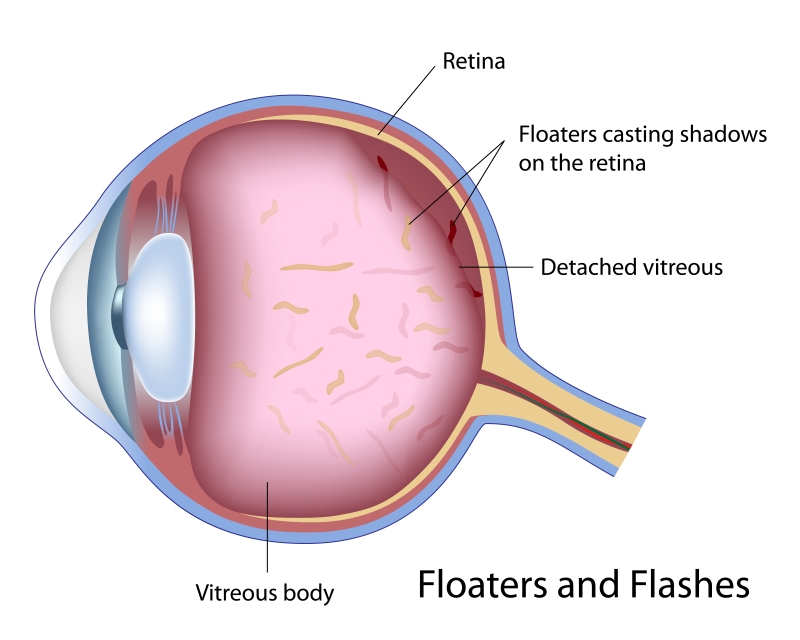
What Are Floaters?
You may sometimes see small specks or clouds moving in your field of vision. They are called floaters. You can often see them when looking at a plain background, like a blank wall or blue sky. Floaters are actually tiny clumps of gel or cells inside the vitreous, the clear jelly-like fluid that fills your eye. While these objects look like they are in front of your eye, they are actually inside. What you see are the shadows they cast on the retina, the nerve layer at the back of your eye that senses light and sends images to your brain.
What Causes Floaters?
When people reach middle age, the vitreous gel may start to thicken or shrink, forming clumps or strands inside the eye. The vitreous gel pulls away from the back wall of the eye, causing a posterior vitreous detachment. This is a common cause of floaters.
Posterior vitreous detachment is more common for people who:
- Are nearsighted
- Have undergone cataract operations
- Have had YAG laser surgery of the eye
- Have had inflammation inside the eye
You should see an ophthalmologist right away if you suddenly develop new floaters, especially if you are over 45 years of age. A floater that suddenly appears may indicate a torn retina.
What Can Be Done About Floaters?
Floaters can get in the way of clear vision, which can be quite annoying, especially if you are trying to read. You can try moving your eyes, looking up and then down to move the floaters out of the way.
While some floaters may remain in your vision, many of them will fade over time and become less bothersome.
What Causes The Appearance Of Flashing Lights?
When the vitreous gel rubs or pulls on the retina, you may see what look like flashing lights or lightening streaks. You may have experienced this same sensation if you have ever been hit in the eye and seen “stars.”
The flashes of light can appear off and on for several weeks or months. If you notice the sudden appearance of light flashes, you should visit your ophthalmologist immediately to see if the retina has been torn.

